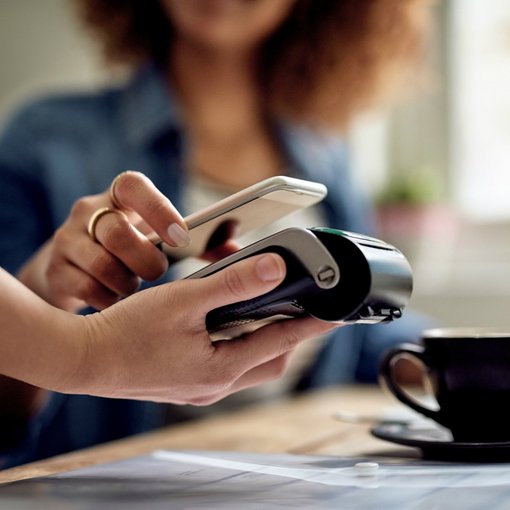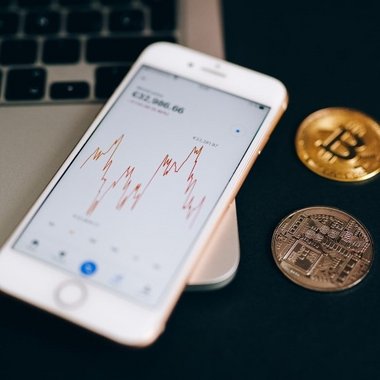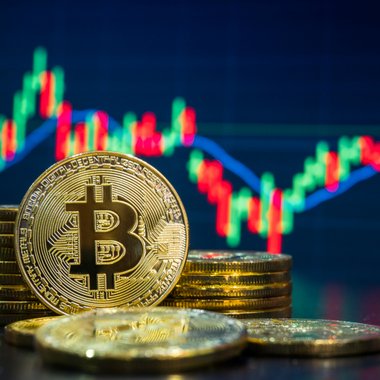
- Four minutes read
What does the future of cryptocurrency look like?
Ten years on, how far have cryptocurrencies come and where are they going next?
In October 2008, Satoshi Nakamoto introduced the world to a revolutionary idea: what if people could send online payments to each other directly, without having to go through an intermediary?
His now famous paper went on to explain how this could be done. A peer-to-peer network he’d created would form a time-stamped, permanent, and immutable record based on proof of work. So, transactions could only be completed and recorded once the system was certain that the underlying obligation had been fulfilled.
Put simply, Nakamoto proposed replacing trust — which thus far had been the cornerstone of online commerce — with cold, hard proof. And his paper explained in detail how this could be achieved.
From big idea to next big thing
The first cryptocurrency based on Nakamoto’s network, Bitcoin, was issued in January 2009. And while Nakamoto himself remains elusive — though entrepreneur Alexander Muse has claimed the US National Security Agency knows his identity — his idea has grown from strength to strength.
Blockchain — the technology underpinning Nakamoto’s idea — has been hailed as the next big thing not just in payments, but also in sectors as diverse as healthcare, utilities, and logistics. More significantly, the value of the cryptocurrency market has skyrocketed since 2008.
The value of a single Bitcoin, which was valued at only 39 cents in 2010, has become a topic of intense speculation, with some experts such as anti-virus software pioneer John McAfee predicting it could hit US$1 million by the end of 2020. Meanwhile, the cryptocurrency market as a whole is expected to be worth US$1 trillion by the end of 2021, according to equally bullish advisory firm Satis Group.
Leading the charge
At Paysafe, we’ve witnessed the growth of the cryptocurrency market first hand. In fact, we’re proud to have launched a major cryptocurrency initiative every year for the past four years.
In 2015, Skrill and NETELLER became two of the first mainstream digital wallets to allow users to convert Bitcoin into fiat currency in order to make deposits to their digital wallet. And, in 2016 and 2017 respectively, we launched payment processing solutions: which allow consumers to convert their Bitcoin balances via a partner to make payments to Skrill merchants, and secondly a payment processing solution for several cryptocurrency exchanges.
Earlier this year, we also started offering consumers the opportunity to buy and sell interests in Bitcoin, Litecoin, Ether and other cryptocurrencies using their Skrill and NETELLER wallets.
Our aim is to make buying, selling, holding and in the future even paying with a cryptocurrency more straightforward for those who are keen to try it out but aren’t sure where to start. A group of people who, our research suggests, is growing in numbers.
The story so far: the journey to mainstream acceptance
Last year, 67% of respondents to our Lost In Transaction survey told us they’d heard of cryptocurrencies. And while only 11% had used them to pay, 30% said they expect them to become more commonplace as a payment method in the coming years.
Merchants seem to feel the same way. Our latest Lost in Transaction report, which covers what the future of payments looks like for SMBs, found that 15% plan to start accepting cryptocurrency payments in the next two years. This might seem like a relatively small increase. But, seeing as only 6% of merchants currently accept cryptocurrency payments, it would mean massive 250% growth.
Clearly, we’re at a tipping point. But while there’s growing awareness of cryptocurrencies, consumers and merchants are yet to fully embrace them as a preferred payment method.
Bridging the gap
In our 2017 Lost in Transaction report, 16% of respondents told us they had security and privacy concerns. And this is despite the fact that security and privacy are often touted as two of cryptocurrencies’ biggest selling points. Similarly, 25% of merchants we surveyed for our latest Lost in Transaction report also told us they don’t trust cryptocurrencies.
In part, these concerns seem to be rooted in a lack of familiarity. And, at Paysafe, we think digital wallets such as Skrill and NETELLER may hold the key to addressing the issue.
Digital wallet acceptance is now at an advanced stage. 50% of consumers told us they’re comfortable using them to pay online. Equally, 43% of merchants currently accept them, and a further 17% plan to start accepting them in the next 2 years.
As more digital wallets start including cryptocurrencies into their offering, the mystique and fear of the unknown that surrounds them should lessen. Paying with a cryptocurrency will become easier and more straightforward, which will encourage more consumers to try them and, in turn, more merchants to start accepting it.
Normalising cryptocurrency: the role of stablecoins
While demystifying cryptocurrency will encourage wider acceptance, it’s only one piece of the puzzle. Volatility is also a problem. Case in point, during 2017, Bitcoin rose 2000% against the US dollar, only to lose two-thirds of that gain barely a year later. Such wide fluctuations in value may make both consumers and merchants nervous about transacting in cryptocurrency. And understandably so.
Over the past 18 months, stablecoins have emerged as a potential solution. Backed by assets such as gold, traditional currency or even a combination of several different assets for diversification, they arguably offer the best of both worlds. They have the benefits of the blockchain ecosystem but, because they’re backed by traditional assets, they’re less prone to wild fluctuations in value.
Things change fast in the world of cryptocurrency. But, at Paysafe, we think stablecoins could change the game when it comes to making cryptocurrency and blockchain technologies more accessible to more people. And, because we’re committed to investing in creating a more seamless transactional experience for consumers and merchants, understanding the role stablecoins might play in delivering this will be an ongoing priority for us in 2019.




